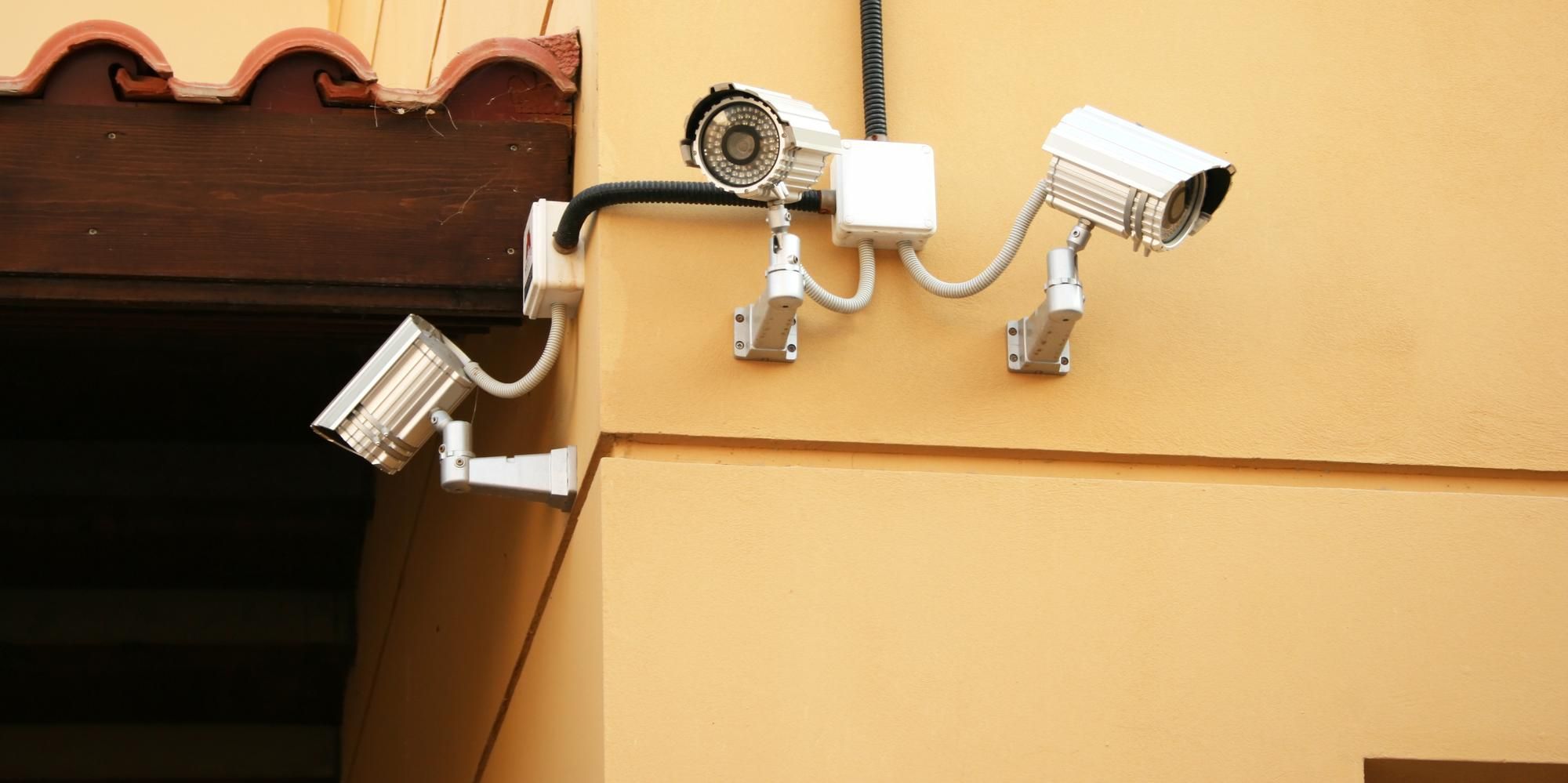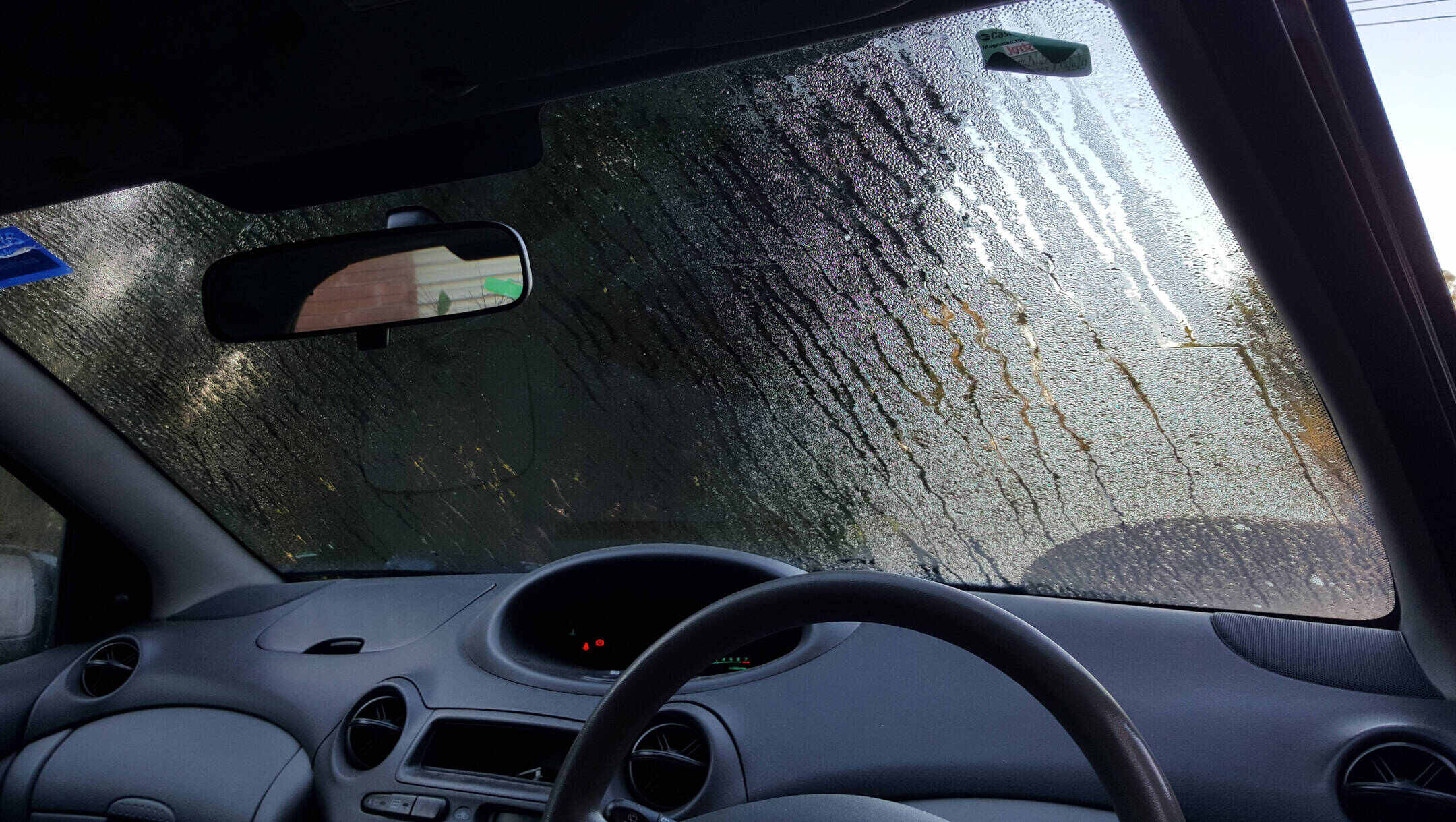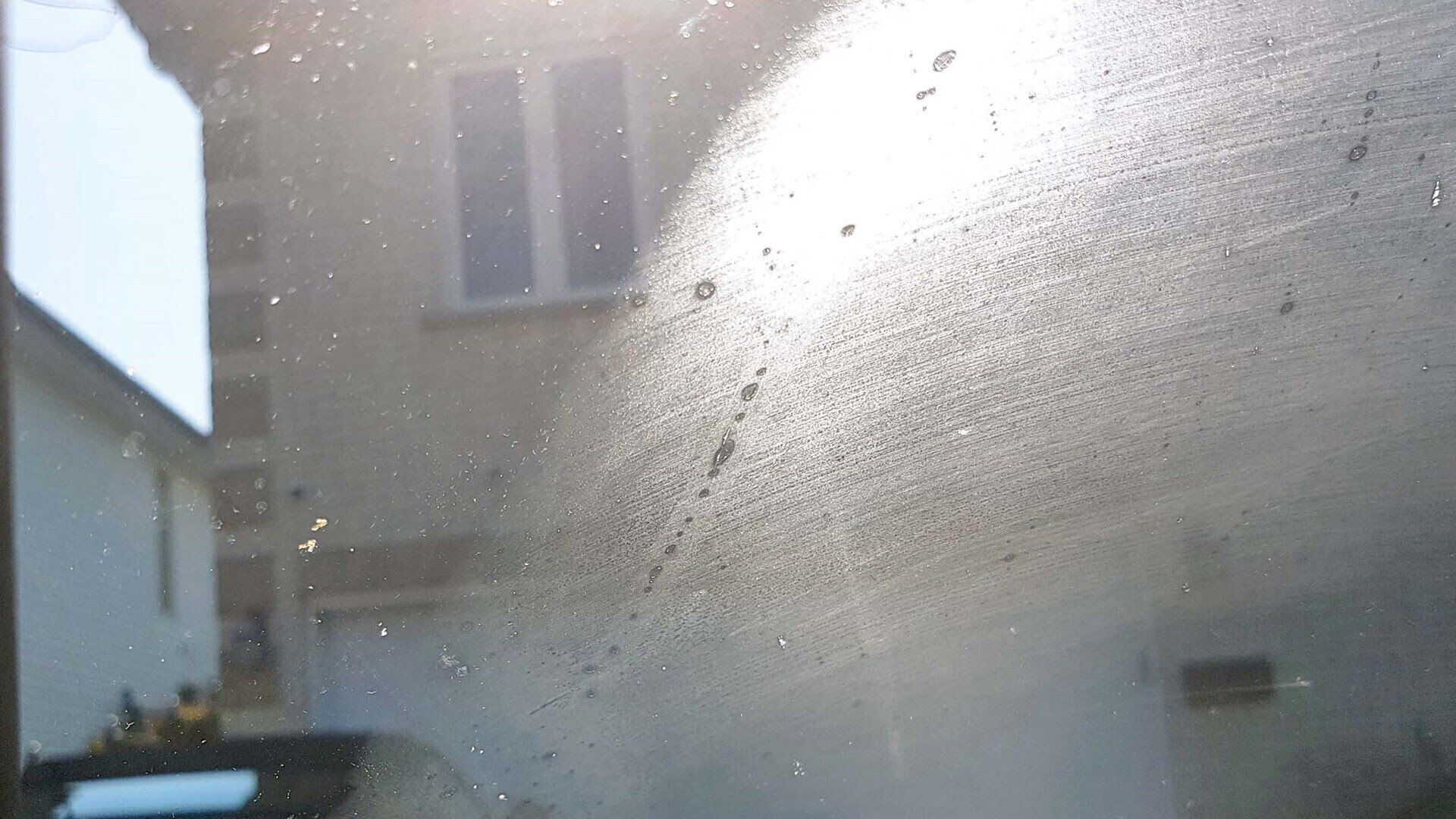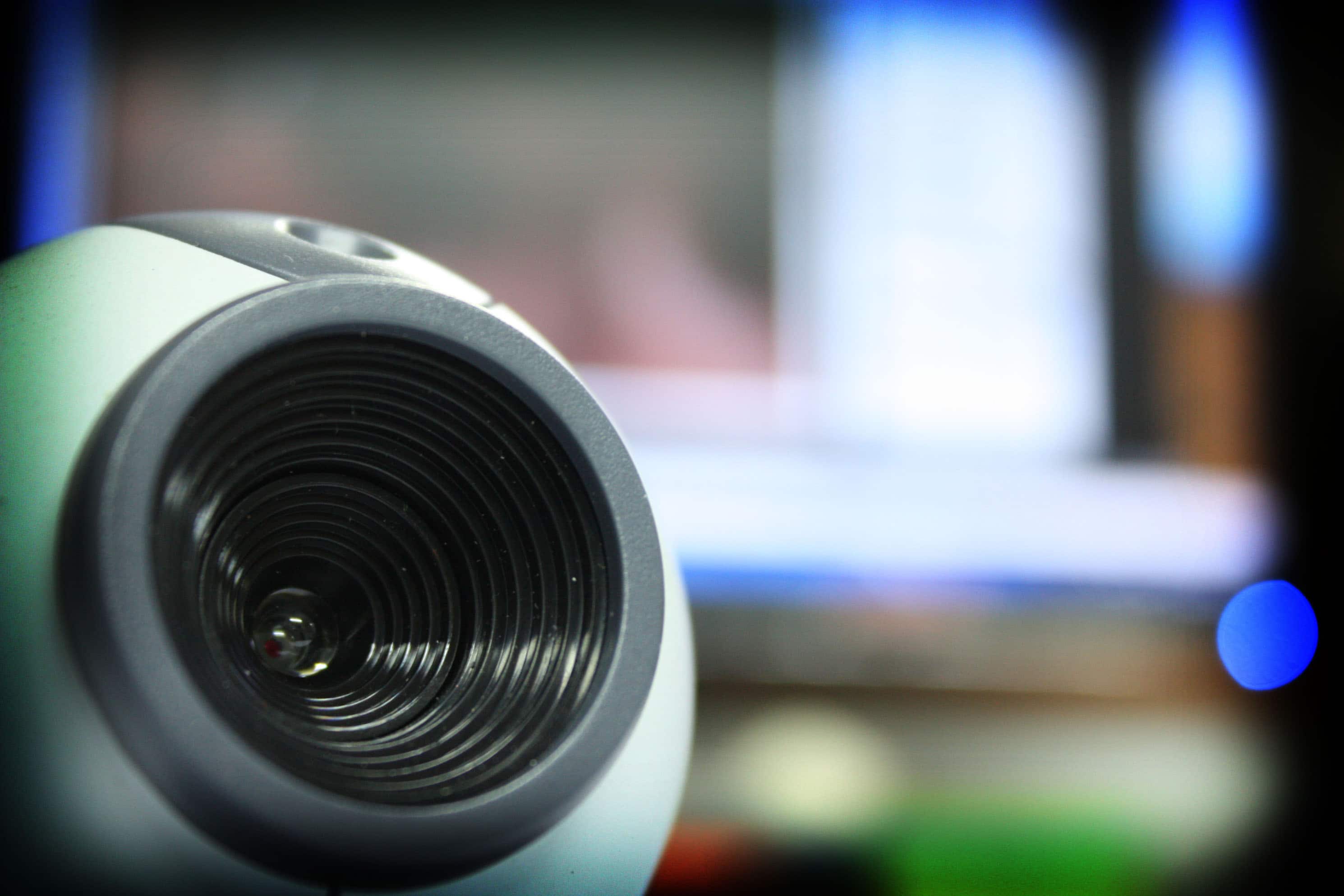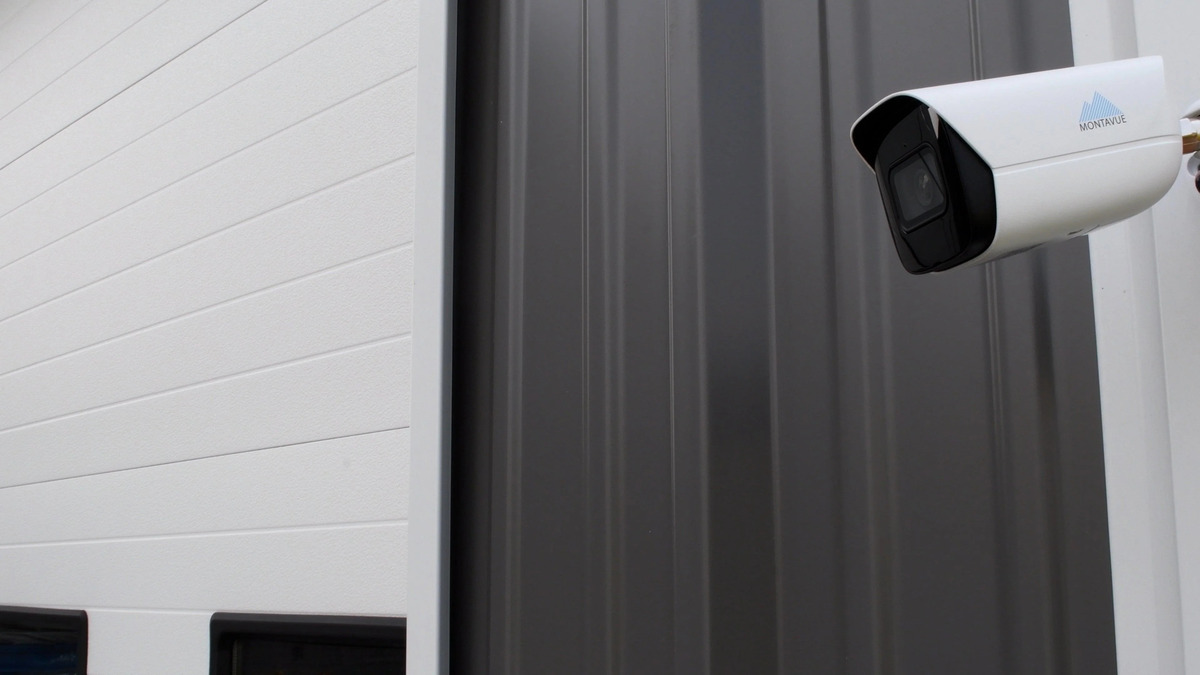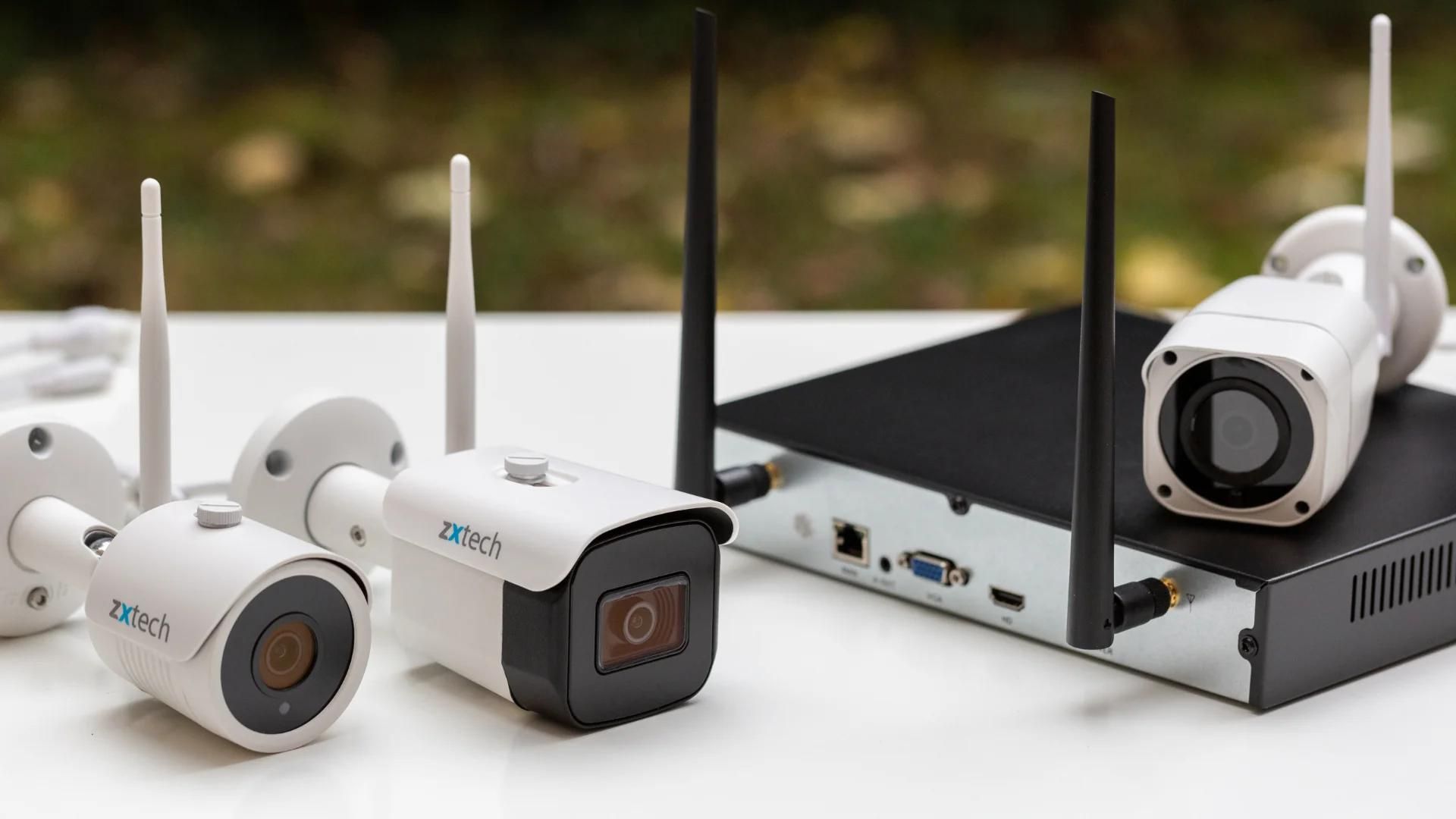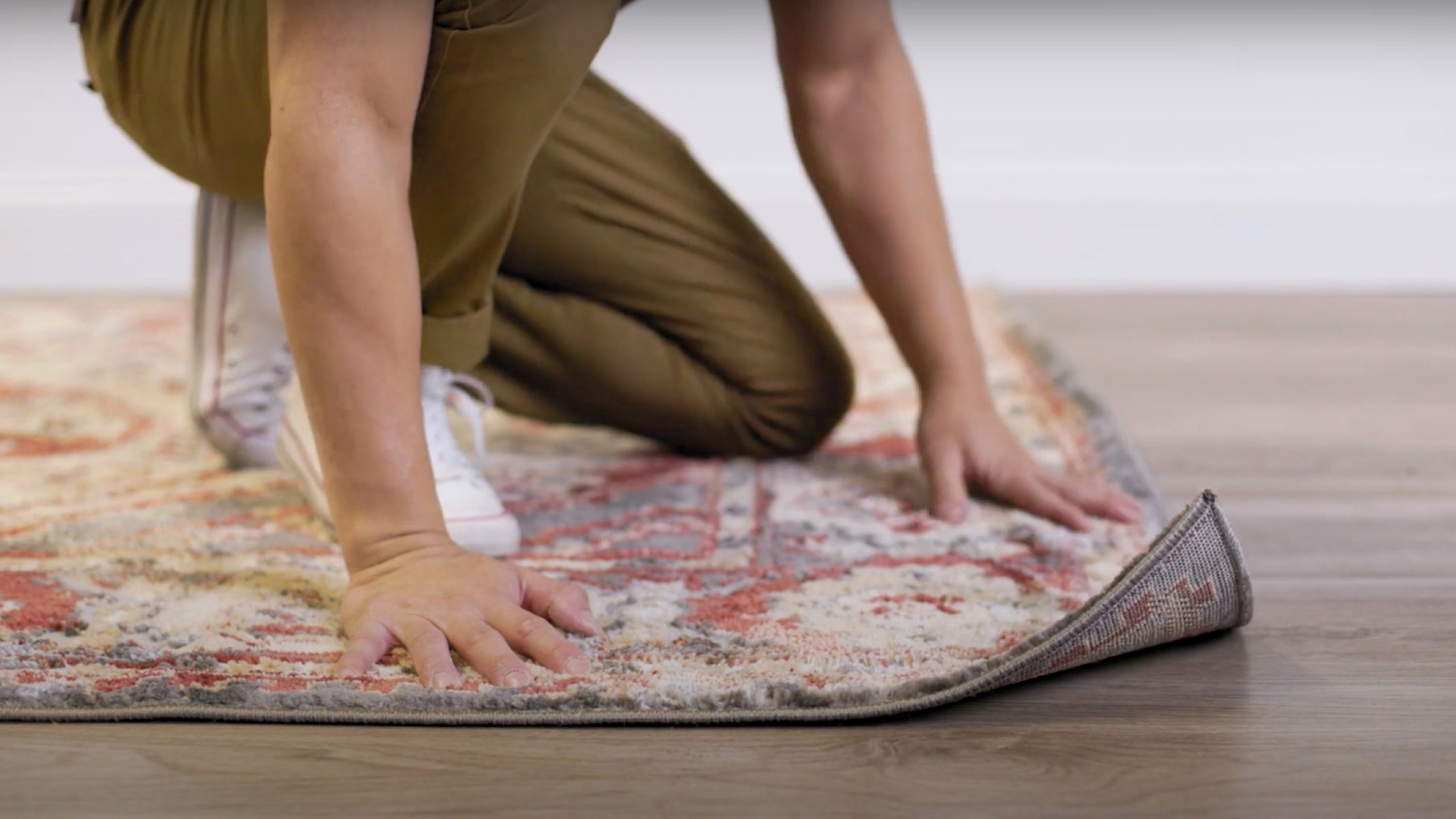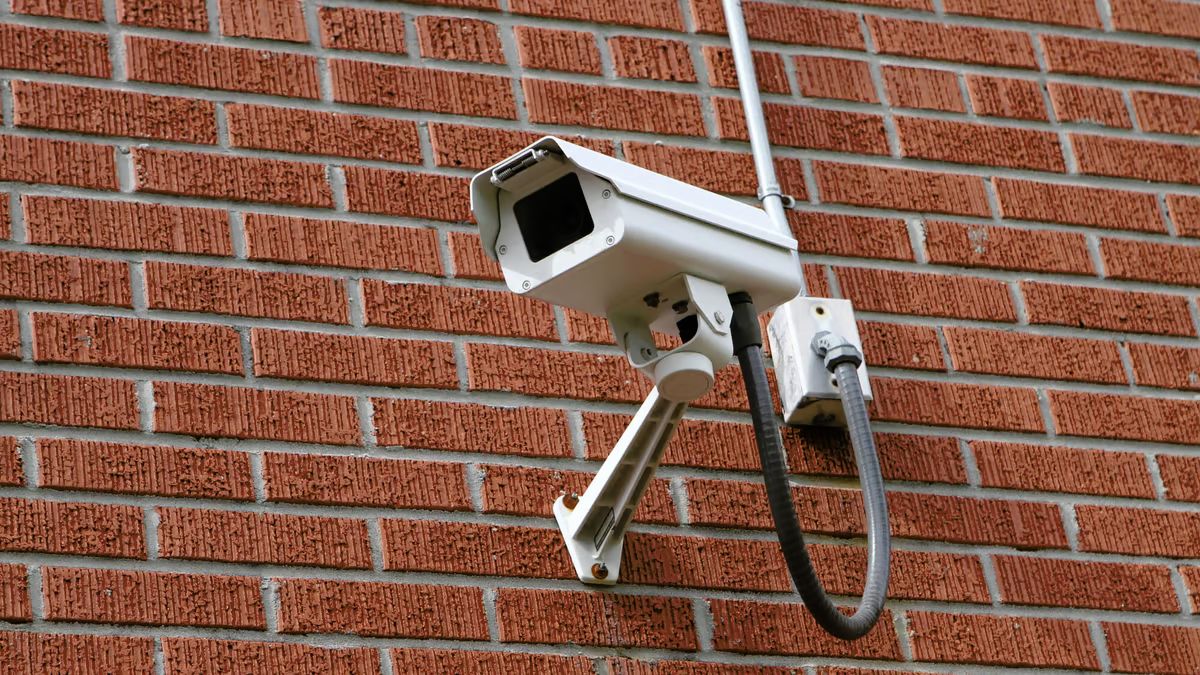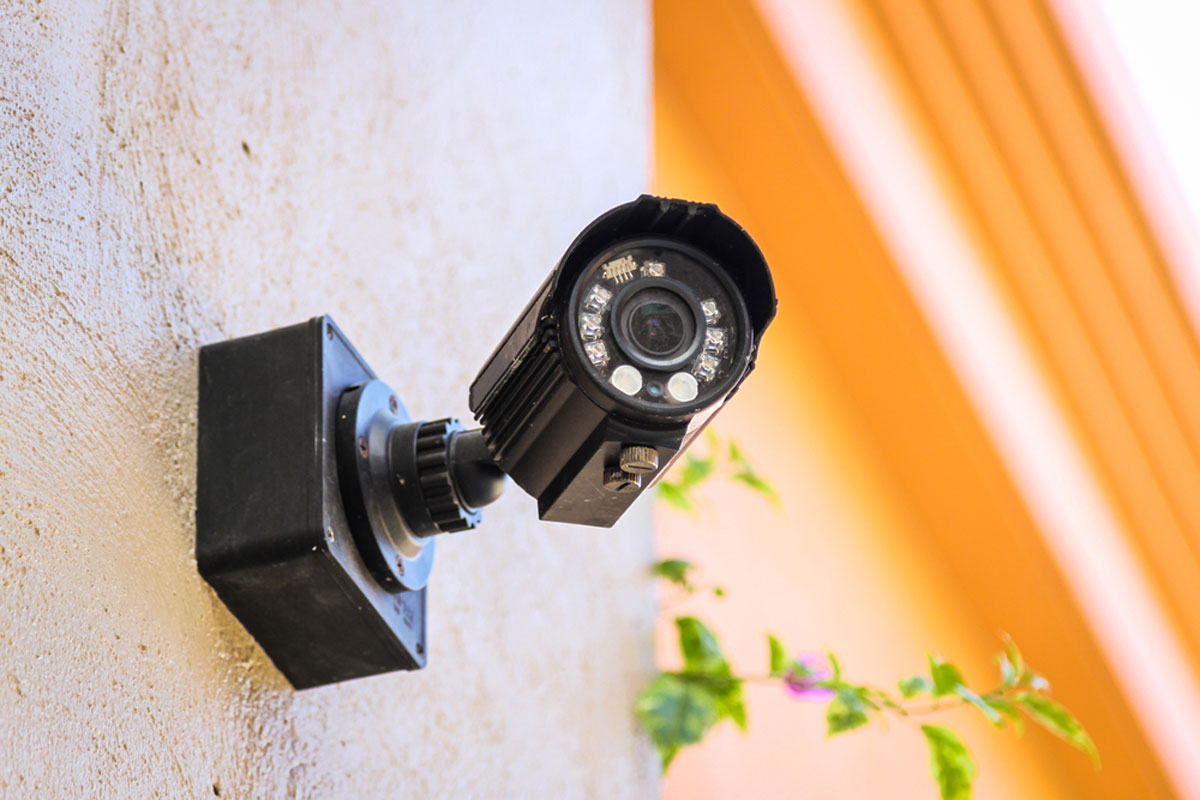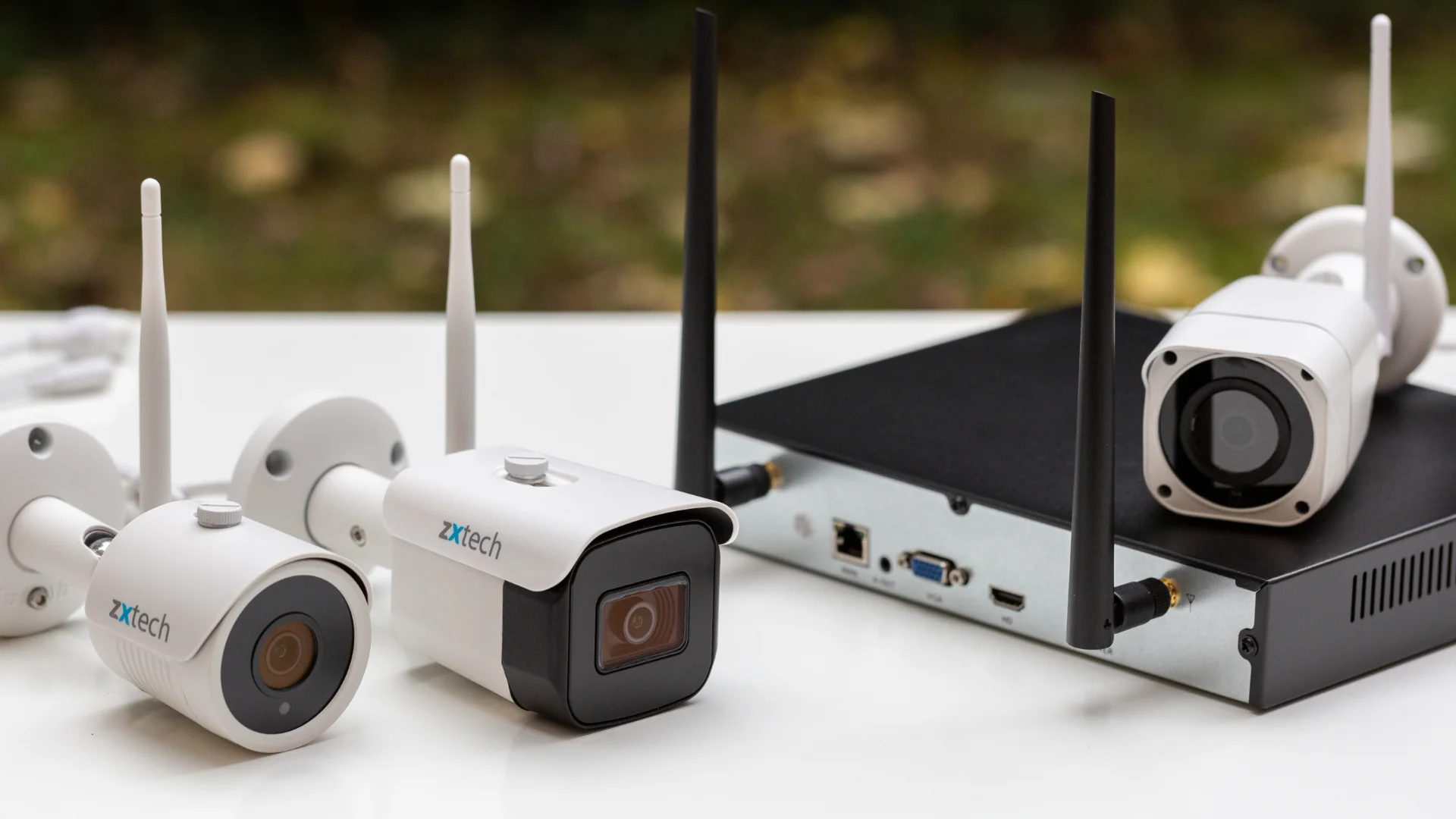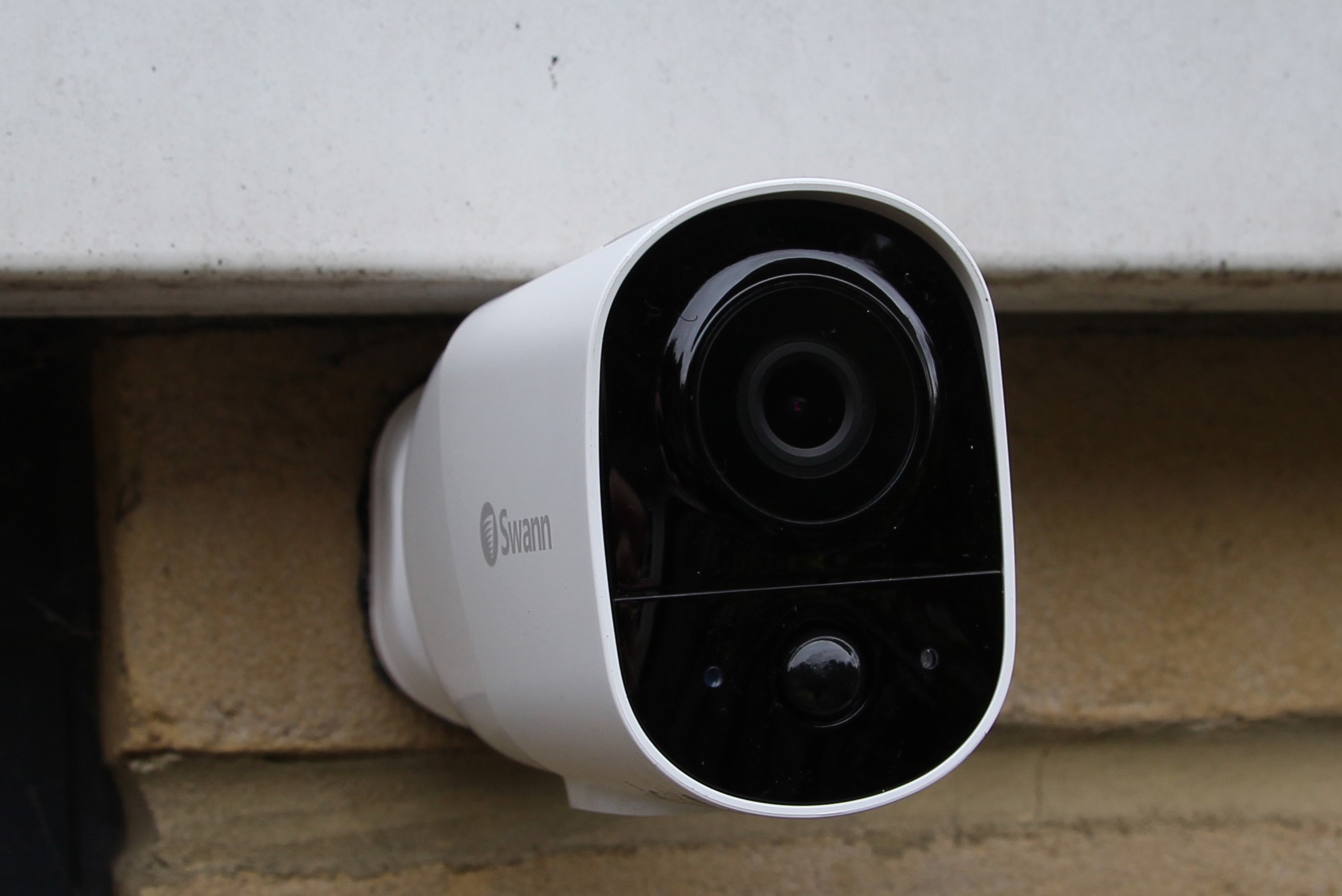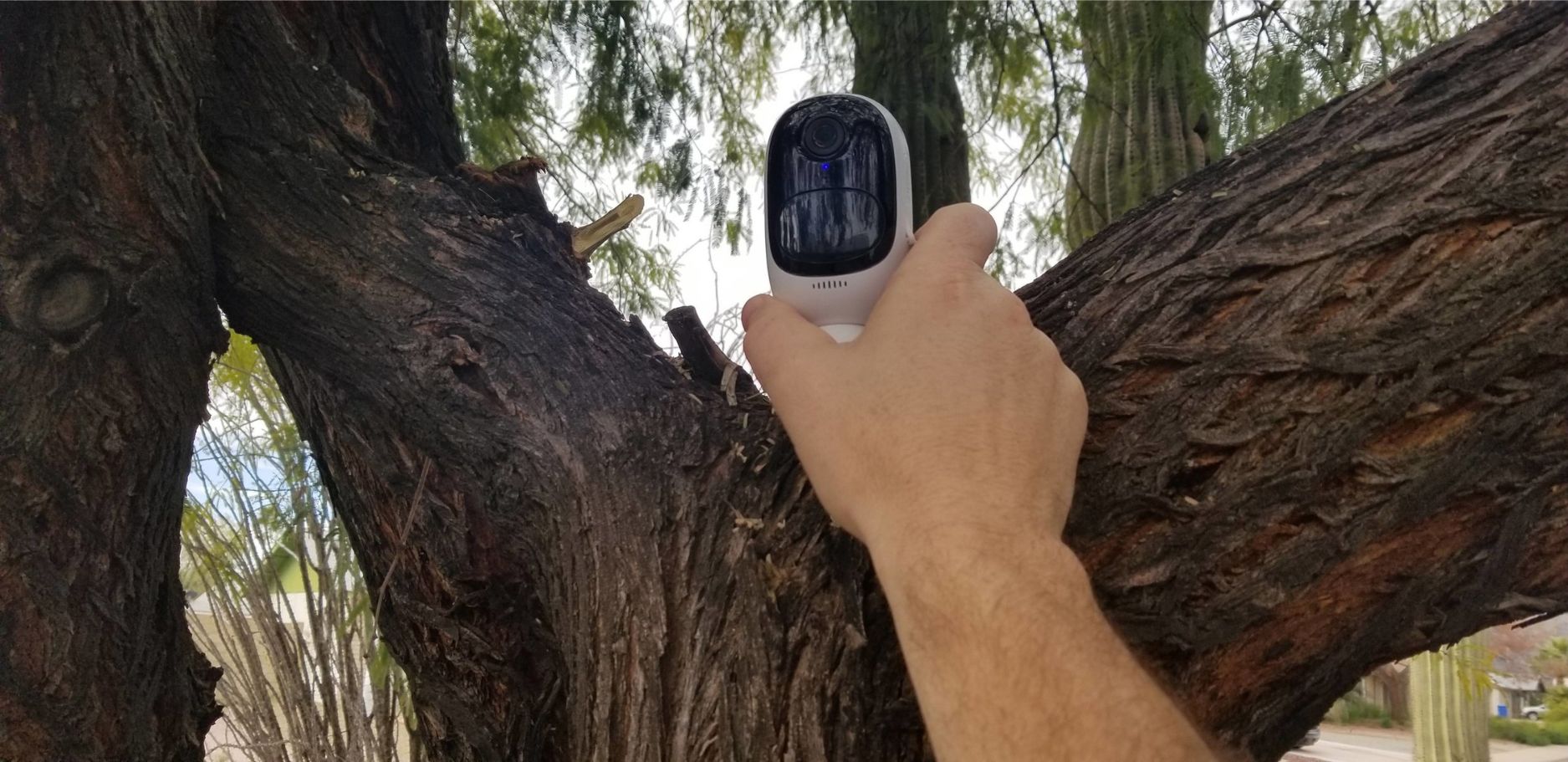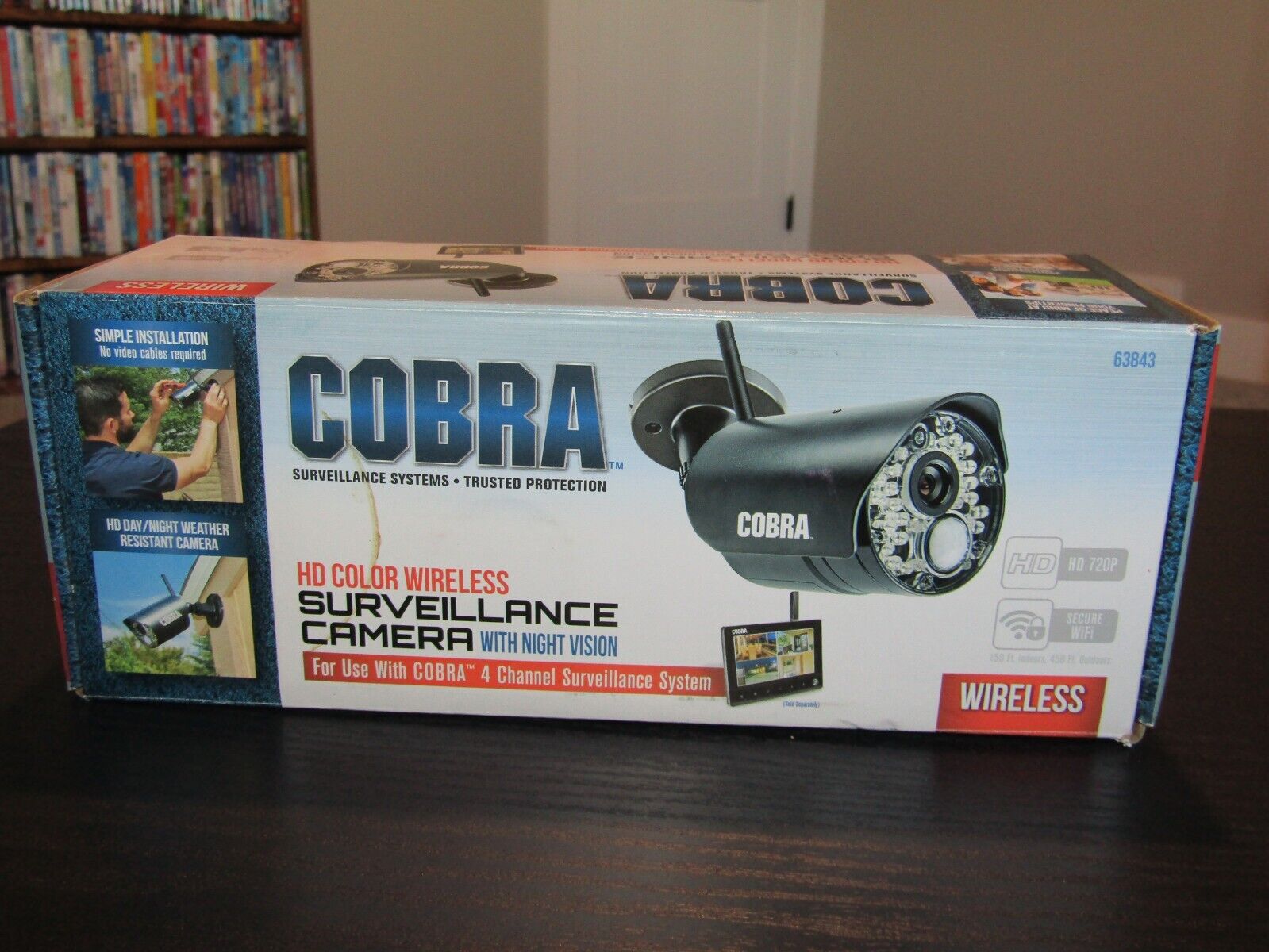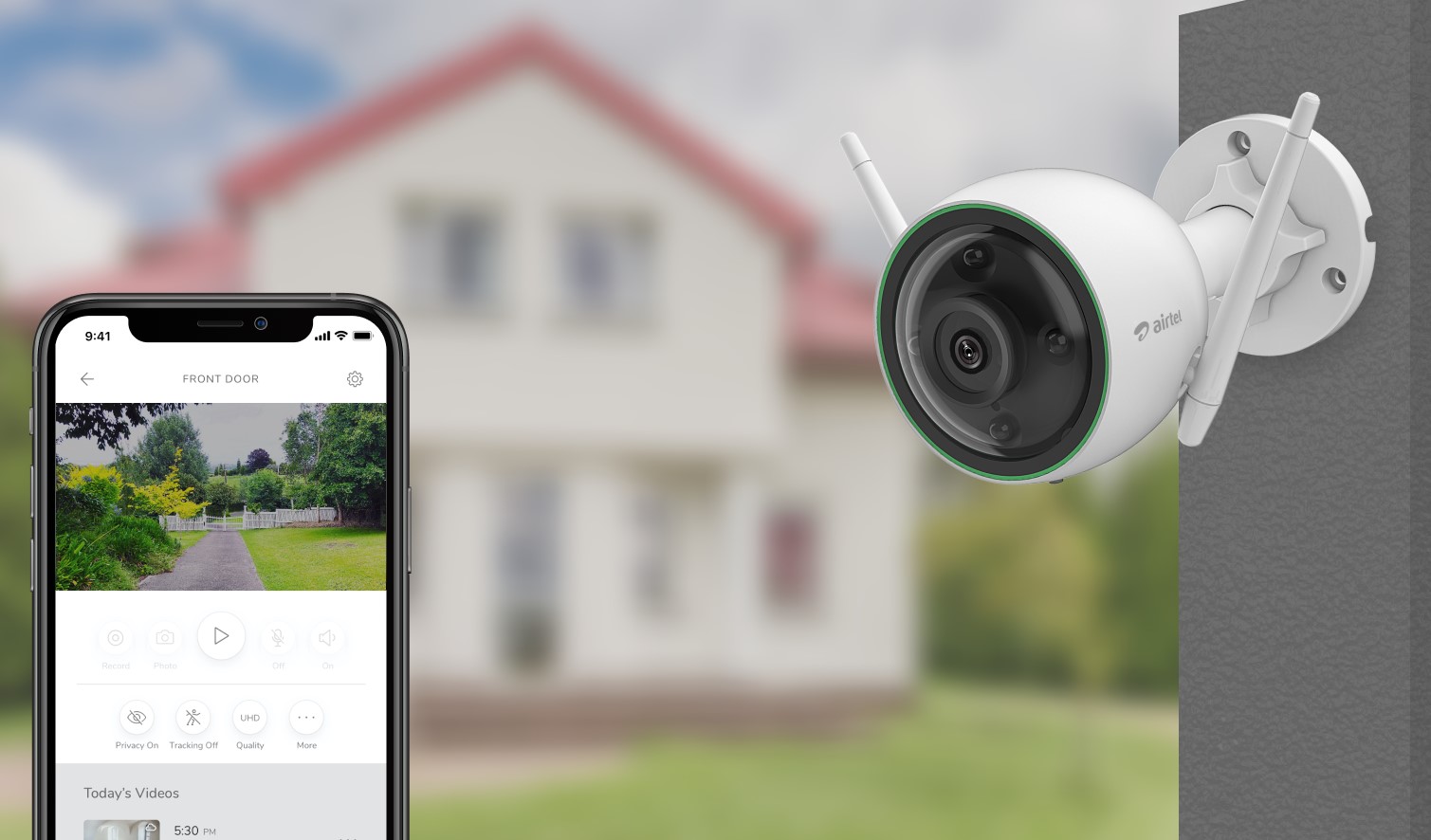Home>Home Security and Surveillance>How To Keep A Security Camera From Fogging Up
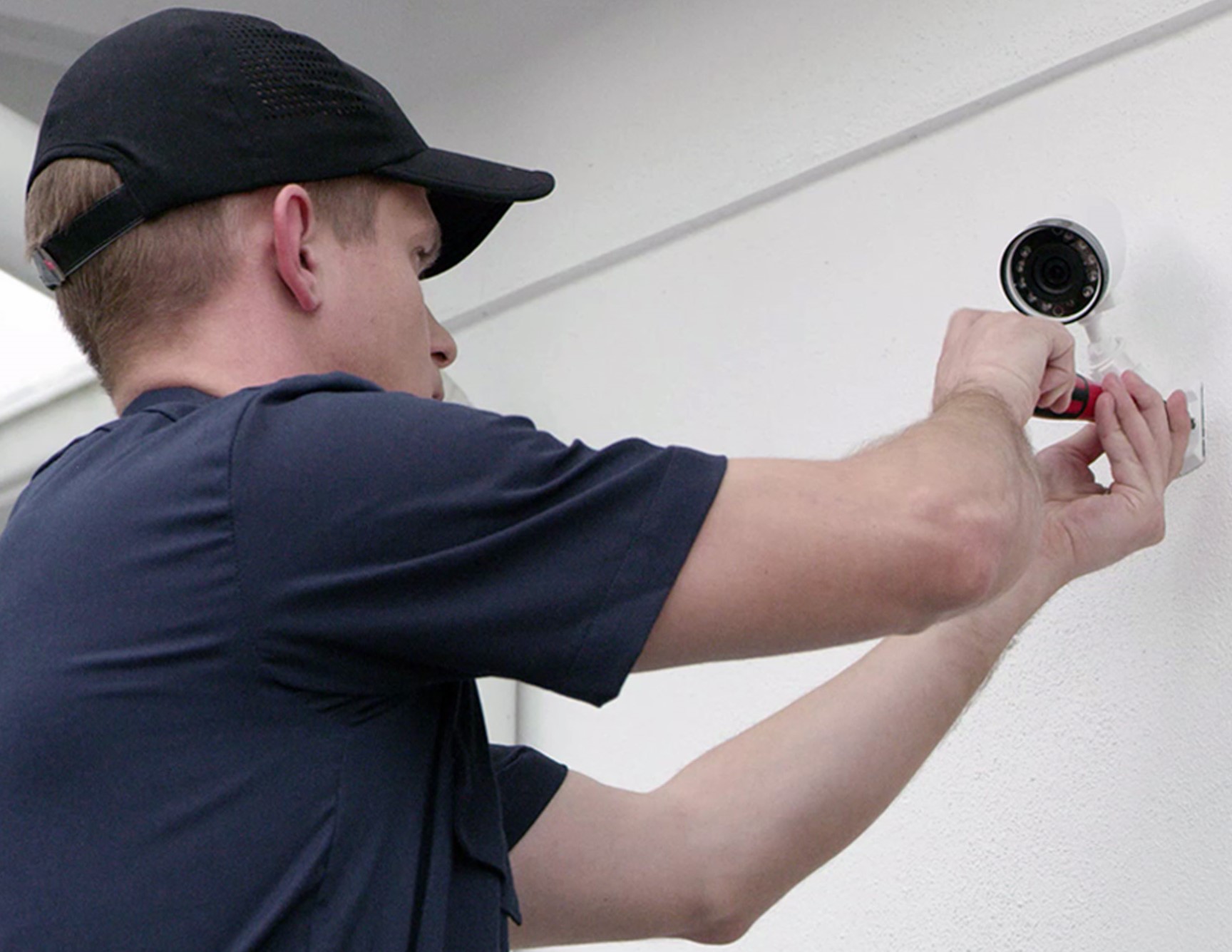

Home Security and Surveillance
How To Keep A Security Camera From Fogging Up
Modified: March 6, 2024
Learn how to prevent your home security and surveillance camera from fogging up with our helpful tips and tricks. Keep your footage clear and your property protected!
(Many of the links in this article redirect to a specific reviewed product. Your purchase of these products through affiliate links helps to generate commission for Storables.com, at no extra cost. Learn more)
Introduction
Welcome to the world of home security and surveillance! In today’s article, we will be discussing an important issue that many homeowners face when using security cameras – camera fogging. If you have ever noticed your security camera lens getting blurry or foggy, then this article is for you. We will explore the causes of camera fogging, as well as provide you with valuable tips and solutions to prevent it from happening.
Having a reliable home security camera system is essential for keeping your loved ones and property safe. However, issues like camera fogging can compromise the effectiveness of your surveillance system. Whether you have indoor or outdoor cameras, fogging can occur under certain conditions, affecting the camera’s ability to capture clear images and videos.
Before we dive into the solutions, it’s crucial to understand the reasons behind camera fogging. Knowing what causes the fogging will help you take preventive measures to keep your security cameras in top shape and ensure optimal performance.
Key Takeaways:
- Prevent camera fogging by choosing well-ventilated housings, strategic camera placement, and regular maintenance. This ensures clear surveillance footage and maximizes the effectiveness of your security system.
- Troubleshoot fogging issues by checking ventilation, seals, and using anti-fog solutions. Proactive measures and proper maintenance will keep your security cameras reliable and fog-free.
Read more: How To Keep Bathroom Mirrors From Fogging
Understanding the Causes of Camera Fogging
Camera fogging occurs when there is a temperature and humidity difference between the environment and the camera itself. This disparity leads to condensation forming on the camera lens, causing it to fog up. Let’s take a closer look at the primary causes of camera lens fogging:
- Weather Conditions: Outdoor security cameras are particularly susceptible to fogging, especially during humid or rainy conditions. When warm, moist air comes into contact with the cooler camera lens, condensation forms and creates fog.
- Temperature Changes: Rapid shifts in temperature can cause condensation to form on camera lenses. For example, if your camera is located near a vent or HVAC system, the sudden blast of hot or cold air can lead to fogging. Similarly, if the camera is exposed to direct sunlight and then moves into a shaded area, the temperature change can cause condensation.
- Poor Ventilation: Inadequate ventilation or sealed camera housings can trap humidity inside, leading to fogging. Cameras that are installed in tightly enclosed spaces where air circulation is limited are more prone to fogging.
- Proximity to Sources of Heat: Cameras placed near heat sources, such as outdoor lights or electrical equipment, can experience fogging due to the temperature difference between the camera lens and the nearby heat source.
- Humidity Levels: High humidity levels can contribute to camera fogging. In areas with consistently high humidity, such as coastal regions, taking preventive measures is essential to avoid frequent fogging incidents.
By understanding the causes of camera fogging, you can take proactive steps to prevent it. Let’s explore some practical tips and solutions to keep your security cameras clear and fog-free.
Tips for Preventing Camera Fogging
Preventing camera fogging is crucial for maintaining clear and effective surveillance. Here are some valuable tips to help you keep your security cameras fog-free:
- Choose the Right Camera Housing: Opt for camera housings that offer good ventilation and airflow. Look for models with built-in fans or vents that help dissipate moisture and prevent condensation buildup.
- Install Cameras in Sheltered Areas: Whenever possible, position your cameras in areas protected from direct exposure to rain, snow, or excessive moisture. For outdoor cameras, consider using weatherproof enclosures or camera mounts that provide some level of coverage.
- Keep a Safe Distance from Heat Sources: Maintain a sufficient distance between your cameras and any heat-emitting sources. Placing cameras too close to lights, heaters, vents, or other equipment can raise the temperature around the lens and increase the likelihood of fogging.
- Use Camera Lenses with Anti-Fog Coating: Some camera lenses come with built-in anti-fog coatings or treatments. These coatings can significantly reduce the formation of condensation and fogging. When purchasing new cameras or lenses, look for models that have this feature.
- Install Cameras in Well-Ventilated Areas: Ensure that the installation location of your cameras allows for proper airflow and ventilation. Avoid placing them in enclosed spaces or areas with limited air circulation.
- Monitor Humidity Levels: Keep an eye on the humidity levels in and around your camera locations. Using a hygrometer can help you measure and track the humidity levels. If the humidity consistently reaches high levels, consider installing dehumidifiers in the vicinity to help reduce moisture in the air.
- Regular Maintenance and Cleaning: Periodically clean the camera lenses and housings to remove any dirt, dust, or debris that can contribute to fogging. Use a soft, lint-free cloth or a camera-specific cleaning kit to avoid scratching the lens.
- Consider using silica gel packets: Place silica gel packets inside camera housings or near the lens to absorb excess moisture. These packets can help keep the humidity levels low and prevent condensation from forming.
- Use Camera Dehumidifying Solutions: There are commercially available camera dehumidifying solutions that can help minimize the risk of fogging. These solutions are designed to absorb moisture and prevent condensation, providing an extra layer of protection for your cameras.
By implementing these preventive measures, you can significantly reduce the occurrence of camera fogging and ensure that your home security cameras are always ready to capture clear and crisp footage.
Using Anti-Fogging Solutions
In addition to preventive measures, there are anti-fogging solutions available that can help further minimize camera fogging issues. These solutions are specifically designed to combat condensation and keep your security camera lenses clear. Here are some popular anti-fogging options:
- Anti-Fog Sprays and Wipes: Anti-fog sprays and wipes are easy-to-use solutions that create a thin, protective film on the camera lens. This film helps repel moisture and prevent condensation from forming. Simply apply the spray or wipe the lens gently with the anti-fogging wipe, following the manufacturer’s instructions.
- Silicone-Based Anti-Fog Coating: Silicone-based coatings are another effective option for preventing camera fogging. These coatings create a hydrophobic barrier on the lens surface, repelling water and reducing the chances of condensation. Apply the silicone-based coating to the lens as per the product instructions, ensuring even coverage.
- Anti-Fog Inserts: Anti-fog inserts are small, reusable packets that absorb moisture and minimize fogging. These inserts are typically made of absorbent materials like silica gel or activated carbon. Place the inserts inside the camera housing or near the lens to help maintain a dry environment.
- Heated Camera Enclosures: Heated camera enclosures are designed to maintain a consistent temperature around the camera lens, preventing fogging. These enclosures feature integrated heating elements that are thermostatically controlled. The heating element keeps the lens warmer than the surrounding air, minimizing the risk of condensation.
- Camera Lens Heaters: Camera lens heaters are small heating pads or strips that can be attached directly to the lens surface. These heaters are effective in preventing fogging by maintaining a slightly higher temperature on the lens, preventing condensation formation.
When using anti-fogging solutions, it is important to follow the manufacturer’s guidelines and recommendations. Some solutions may require periodic reapplication or maintenance to ensure optimal effectiveness. Additionally, consider the specific needs and requirements of your camera system when choosing the right anti-fogging solution.
By incorporating anti-fogging solutions into your camera maintenance routine, you can provide an extra layer of protection against condensation and keep your security camera lenses clear for crisp and reliable surveillance footage.
To prevent a security camera from fogging up, apply an anti-fog solution or a small amount of dish soap on the lens and gently wipe it off. This will help to keep the lens clear and prevent fogging.
Proper Camera Placement to Reduce Fogging
Choosing the right location for your security cameras is crucial in minimizing camera fogging. Proper camera placement can help create an optimal environment and reduce the chances of condensation forming on the lens. Here are some guidelines for effective camera placement:
- Avoid Low-Lying or Damp Areas: Position your cameras away from areas that are prone to collecting moisture, such as low-lying or damp spots. These areas tend to have higher humidity levels, which can increase the likelihood of fogging.
- Consider Camera Elevation: Mounting your cameras at an appropriate height can help reduce the exposure to ground-level moisture and fog. Elevated camera placement also provides a wider field of view and minimizes obstructions.
- Strategic Outdoor Camera Placement: When installing outdoor cameras, place them under eaves or overhangs to provide some protection from direct exposure to rain or snow. This helps to minimize the amount of water that can come into contact with the lens and reduces the chances of fogging.
- Outdoor Camera Positioning: Position outdoor cameras facing downwards slightly to prevent rainwater from accumulating on the lens. This angle encourages water to naturally run off the camera, reducing the risk of water droplets causing fogging.
- Indoor Camera Placement: For indoor cameras, select locations that have good airflow and ventilation. Avoid placing them in corners or near air vents that can cause rapid temperature shifts, leading to fogging. Also, ensure that the cameras are not obstructed by furniture or other objects that may impede airflow.
- Avoid Direct Sunlight: Direct sunlight can cause temperature fluctuations, contributing to fogging. Try to position your cameras in areas where they are shielded from direct sunlight, particularly during times when temperature changes are more prominent, such as sunrise and sunset.
- Consider Camera Housings: If your cameras are exposed to extreme weather conditions, consider using weatherproof camera housings. These protective enclosures provide an added layer of defense against moisture and can help keep your cameras fog-free.
- Regularly Inspect Camera Surroundings: Periodically inspect the area surrounding your cameras for any potential sources of moisture, such as leaking pipes, gutter overflow, or sprinkler systems. Addressing these issues promptly can minimize the risk of camera fogging.
By following these guidelines for camera placement, you can create an environment that is less prone to fogging and improve the overall performance and longevity of your security cameras.
Read more: How To Stop A Storm Door From Fogging Up
Maintaining and Cleaning Security Cameras
To ensure the longevity and optimal performance of your security cameras, regular maintenance and cleaning are essential. Here are some important tips to help you maintain and clean your security cameras:
- Check Camera Seals: Regularly inspect the seals and gaskets on your camera housings to ensure they are intact and free from cracks. Damaged seals can allow moisture to seep in, increasing the risk of fogging. Replace any faulty seals promptly.
- Remove Dust and Debris: Dust, dirt, and debris can accumulate on camera lenses, impacting image quality. Use a soft, lint-free cloth or a camera-specific cleaning kit to gently wipe away any particles from the lenses. Avoid using rough materials or applying excessive pressure, as this can scratch or damage the lens surface.
- Clean Camera Housings: Regularly clean the camera housings to remove dirt, dust, and residue that can affect camera performance. Use a damp cloth or a solution of mild soap and water to gently wipe the housing surfaces. Avoid using harsh chemicals or abrasive cleaners that can damage the housing’s finish.
- Inspect Mounting Hardware: Check the mounting hardware regularly to ensure that it is secure and not loose. Loose mounts can impact the camera’s stability and alignment, potentially leading to fogging issues.
- Monitor Cable Connections: Periodically examine the cable connections to ensure they are secure and free from damage. Loose or damaged cables can cause signal disruptions, affecting the camera’s functionality.
- Perform Regular Camera Functional Checks: Test your cameras regularly to ensure they are functioning correctly. Check the camera’s image quality, focus, and movement detection capabilities. If you notice any abnormalities or issues, address them promptly.
- Keep Surrounding Area Clean: Maintain the cleanliness of the area surrounding your cameras. Remove any foliage, cobwebs, or other obstructions that may affect the camera’s field of view or obstruct airflow around the camera.
- Follow Manufacturer’s Guidelines: Refer to the manufacturer’s guidelines and recommendations for specific maintenance and cleaning instructions. Different camera models may have unique requirements, so it’s important to adhere to the manufacturer’s guidelines to avoid any damage.
By regularly maintaining and cleaning your security cameras, you can prolong their lifespan and ensure reliable performance. A well-maintained camera system will be less prone to fogging and provide clear and high-quality surveillance footage when you need it most.
Troubleshooting Common Fogging Issues
Even with preventive measures in place, fogging issues can still occur. Here are some troubleshooting steps to help you address common fogging problems with your security cameras:
- Check for Proper Ventilation: Ensure that your camera housings have adequate ventilation. Inadequate airflow can contribute to condensation buildup and fogging. If necessary, consider installing additional ventilation, such as fans or vents, to improve airflow.
- Inspect Camera Seals: Check the seals and gaskets on your camera housings for any signs of damage or deterioration. Damaged seals can allow moisture to enter, leading to fogging. Replace any faulty seals promptly.
- Reposition the Camera: If you notice persistent fogging in a specific location, try repositioning the camera. Experiment with different angles and heights to find a position that minimizes moisture exposure and reduces the risk of fogging.
- Consider External Heat Source: If fogging occurs mainly during cold weather, consider using an external heat source near the camera. This can help maintain a slightly higher temperature around the lens and prevent condensation from forming.
- Use Anti-Fog Solutions: If fogging persists despite your efforts, consider using anti-fog sprays, wipes, or inserts. These solutions can help create a barrier against condensation and minimize fogging. Follow the manufacturer’s instructions for proper application.
- Monitor Humidity Levels: Keep track of the humidity levels in the area where your cameras are installed. If you notice consistently high humidity, use dehumidifiers or other moisture-reducing methods to control the humidity and minimize fogging.
- Regularly Clean and Inspect: Perform regular cleaning and inspection of your cameras to ensure they are free from dust, debris, and any obstructions that can contribute to fogging. Clean the lenses and camera housings periodically to maintain optimal performance.
- Consult with Professionals: If you have tried troubleshooting techniques and fogging issues persist, it may be beneficial to consult with professionals in the field of home security and surveillance. They can provide guidance and assistance in resolving complex fogging problems.
Remember, troubleshooting camera fogging issues may require some trial and error. It may take a combination of preventive measures and troubleshooting steps to find the most effective solution for your specific camera setup.
By being proactive and addressing fogging issues promptly, you can ensure that your security cameras continue to provide reliable surveillance and help keep your property safe and secure.
Conclusion
Keeping your security cameras free from fogging is vital for maintaining effective surveillance and capturing clear footage. Understanding the causes of camera fogging, implementing preventive measures, and taking proactive steps to address any issues will help ensure optimal performance and longevity of your home security system.
We discussed the common causes of camera fogging, including weather conditions, temperature changes, poor ventilation, proximity to heat sources, and humidity levels. By being aware of these factors, you can take preventive actions to minimize the risk of fogging.
We provided valuable tips for preventing camera fogging, such as choosing the right camera housing, proper camera placement, regular maintenance and cleaning, and using anti-fogging solutions. These tips will assist you in creating an environment that is less prone to condensation and fogging, maximizing the effectiveness of your security cameras.
In the event that fogging issues persist, we shared troubleshooting techniques to help you identify and address common problems. By closely inspecting the ventilation, seals, and positioning of your cameras, as well as considering the use of anti-fog solutions, you can overcome fogging challenges and improve the performance of your surveillance system.
Remember to follow the manufacturer’s guidelines for maintenance and consult with professionals if necessary. By diligently maintaining and troubleshooting your security cameras, you can ensure that they continue to provide reliable and clear surveillance footage for years to come.
Protecting your home and loved ones is a top priority, and a fog-free camera system is an essential component of a robust home security setup. By implementing the knowledge and tips shared in this article, you are well-equipped to prevent camera fogging and enhance the security and surveillance capabilities of your home.
Frequently Asked Questions about How To Keep A Security Camera From Fogging Up
Was this page helpful?
At Storables.com, we guarantee accurate and reliable information. Our content, validated by Expert Board Contributors, is crafted following stringent Editorial Policies. We're committed to providing you with well-researched, expert-backed insights for all your informational needs.
